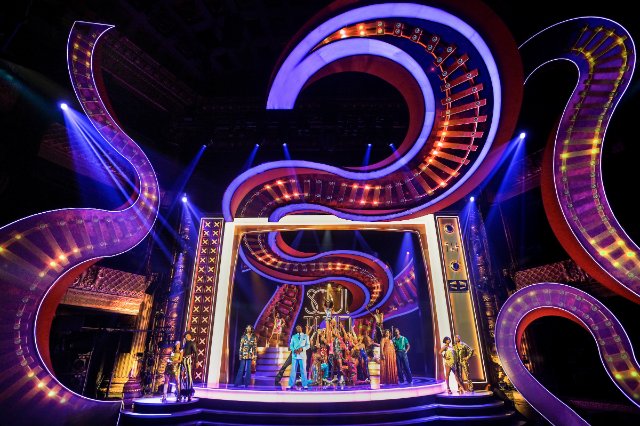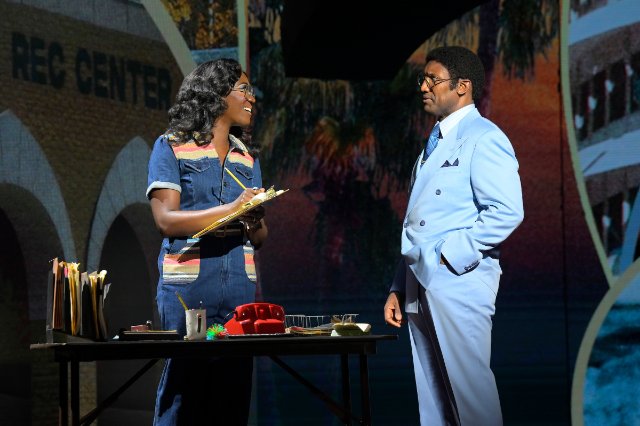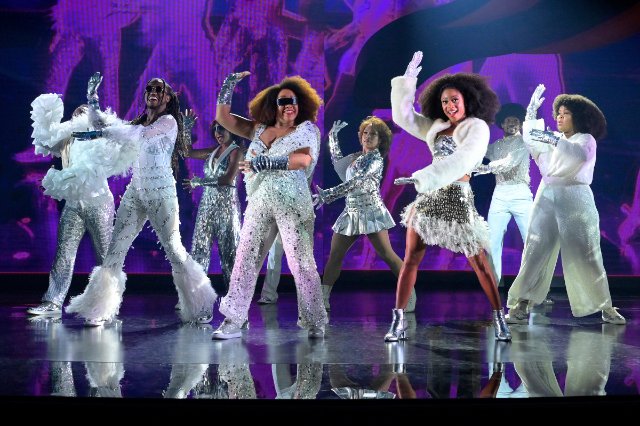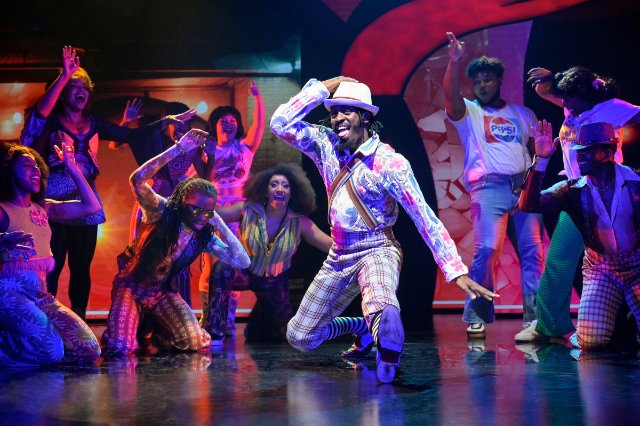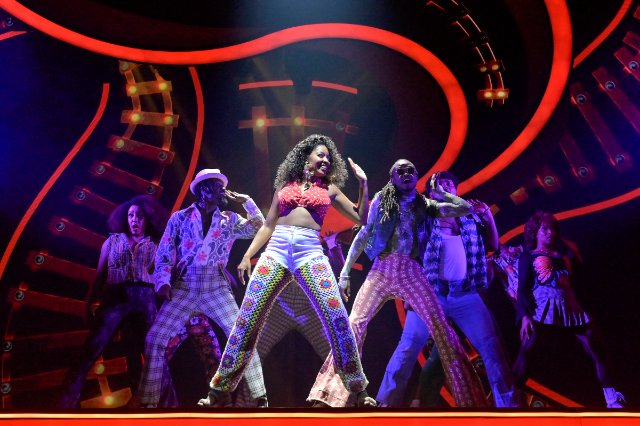Hippest Trip: The Soul Train Musical
Dominique Morisseau's Second Musical About Black Song In The Late 20th Century at San Francisco's ACT
By: Victor Cordell - Sep 08, 2023
First there was music. In modern times, the African-American community’s involvement in most American music genres has ranged from highly influential to dominant to seminal. Its contributions have been profound and often overwhelming in jazz, blues, gospel, rhythm and blues, rock and roll, and rap and all their descendants, to name a few. Black invention has led to similar innovations in dance – tap, swing, twist, disco, hip-hop, and their many derivatives. But it wasn’t until 1971 that African-American music and dance received a national platform to broadcast their deserved exposure. That platform was “Soul Train,” which would run in syndication for 35 years, a record for live performance on American television.
“Hippest Trip: The Soul Train Musical” is playwright Dominique Morisseau’s homage not only to “Soul Train” itself, but also to its creator and longtime host, Don Cornelius. The result is an admixture of upbeat music and dance integrated with a serious, warts-and-all biography of a complex man obsessed with the lifelong goal of presenting Black youth in a positive light and securing his legacy as its architect. For the greater part, the concept works, and the musical entertains. However, the considerable devotion to dance and the occasionally wandering script sometimes impede the buildup of involvement.
The production values of “Hippest Trip” offer a cornucopia of eye and ear candy, and the performers give memorable performances. From the first number, the dancers undulate their bodies, shake their booties, and twirl their appendages in a non-stop display of fine artistry. The opening night audience showed wild appreciation at the conclusion, though there could have been a little positive bias, given an abundance of audience members associated with the TV show and the musical.
Quentin Earl Darrington totally inhabits the role of the imperious, buttoned-down Cornelius, whose single-mindedness and impersonality often isolates him from the people who matter to him. His unwillingness to accept advice from anyone, most often from his longtime assistant, Pam Brown and his son Tony, who worked for him, agonizes even those closest to him. Acknowledging his own personal and professional shortcomings, Don sadly notes, “The Wiz is just a man.” Indeed, one of the powerful elements of Morisseau’s script concerns the difference between the public and private individual, observing that many people in the public eye do not have fairytale lives and suffer behind the scenes.
Like many of the cast, Darrington brings singing chops to the table as well, with a smooth natural baritone as well as a clarion upper register in the falsetto range. As the more light-hearted yet grounded Pam Brown, the talented Amber Iman counterpoints her boss with a warm, concerned personality and the gumption to confront and sass Cornelius. She, too, boasts a fine singing voice which drew raves from the crowd.
Of course, music is the foundation of dance, and the score is full of hits that played on “Soul Train” during its era. Much of the emotion created is through the song selection and performance. Many are represented by small fragments, but some even recur and have thematic significance. Such is the case with “Smiling Faces” which addresses hypocrisy and is used to cast aspersions at Dick Clark, who was Cornelius’s nemesis.
Despite its energy, the show doesn’t really gain desired traction until the finale of Act 1, which is a fine rendition of “I Will Survive” sung by several performers. The momentum created survives intermission, and the highly charged Act 2 is both rousing and poignant. Interestingly, the key song sung by Cornelius at the climax which pulls at the heartstrings doesn’t fit in the wheelhouse of the “Soul Train” songbook, but is Bachrach and David’s “Walk On By.”
Emmy winning Scenic Designer Jason Sherwood’s set adds another dimension to the musical, contributing to the period look. As shown in the opening photo of this review, the stage is brilliantly framed as if in an old television box. Large serpentines with electronic displays extend onto the walls of the orchestra and onto its ceiling, creating a spectacular look like you have never seen in a theater.
Multiple Tony nominee Camille A. Brown’s choreography is breathtaking in its volume and complex design within its idiom. Dancers deliver with personality, boundless energy, and consummate skill. However, several issues are of concern, which may derive from writing or direction. What surprises is that the dance numbers don’t emulate “Soul Train,” so that the sense of the TV show is not well developed. In addition, the specific dance styles lack sufficient contrast to the untrained eye. When representing the ‘70s, dancers use detailed gesticulations that were not yet in use, seeming to value virtuosity over authenticity. Little distinction is shown for variations such as disco. There is no slow dancing, and the TV show’s famous line dancing (if that’s what is intended in some of the dance solos) is not introduced in the narrative or clearly represented. While “Soul Train” had couples dancing, the production numbers are in corps style. Particularly to older observers, the styling may seem repetitive and may diminish the interest over time.
Like Morisseau’s “Ain’t Too Proud,” this production hopes to move from a premiere in the Bay Area to Broadway. “Hippest Trip” contains many assets including great execution, but tweaking a few conceptual matters might enhance its chances to shine even more.
“Hippest Trip: The Soul Train Musical” is written by Dominque Morisseau, directed by Kamilah Forbes, presented by American Conservatory Theater, and plays at the Toni Rembe Theater, 415 Geary Street, San Francisco, CA through October 8, 2023.

